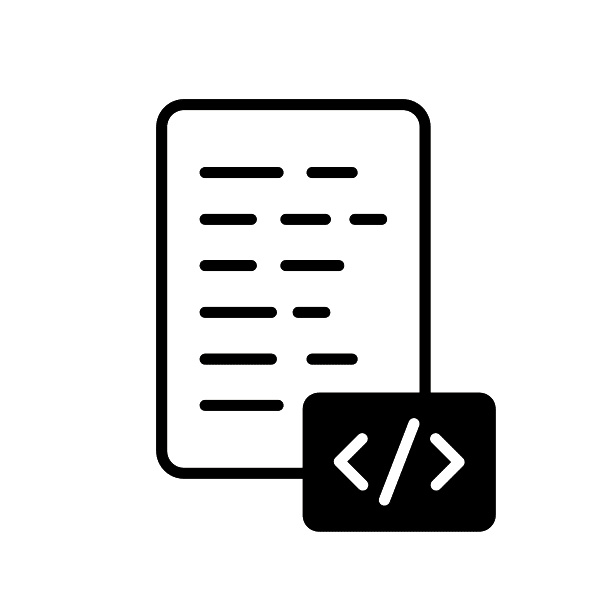Become proficient in iOS app development swiftly with Apple’s cutting-edge Swift language.

Our teachers and tutors graduated from top universities








Overview

Customized curriculum
We'll find a tutor who can make sure you're prepared for the A-Level Accounting exam with customisable lessons catered to fit your needs.

Flexible
Take lessons only when you need them—as little or as many as necessary until you feel confident.

Private lesson
No need to accommodate other students. Learning is customised your perfect pace and difficulty so you are always improving.
About Arduino
Arduino goes beyond just hardware—it’s a symbiotic ecosystem that bridges physical and digital worlds. Its intuitive software interface, coupled with a diverse hardware lineup, makes it accessible to users of varying skill levels. With both digital and analog I/O pins, Arduino boards easily interface with a multitude of sensors, displays, motors, and more.
Its open-source ethos fosters community collaboration. A plethora of libraries and sketches are at your disposal, enabling you to build upon existing work and fast-track your projects. Whether your focus is robotics, home automation, IoT, or interactive art, Arduino’s flexibility turns your concepts into tangible products.
Joining the active Arduino community lets you exchange knowledge, learn from others, and contribute to the platform’s growth. This cooperative environment accelerates learning and spurs innovation, making Arduino an ideal tool for both experimentation and real-world applications.
Educationally, Arduino is a potent asset in academic settings from grade schools to universities. Its straightforward nature offers a gateway into electronics and coding. Educators prize Arduino’s hands-on methodology, which transforms theoretical engineering principles into physical, interactive experiments. From mimicking a basic traffic light to creating a working weather station, the educational scope is vast and enriching.
Arduino also boasts cross-platform compatibility, working smoothly on Windows, macOS, and Linux. This ensures technical restrictions won’t impede your Arduino projects, offering a flexibility rare in specialized systems.
Long-term, mastering Arduino serves as a launchpad for more advanced electronics and coding endeavors. Skills in problem-solving, logical reasoning, and hardware-software interplay are easily transferrable to more complex systems and platforms. Whether you aim to be a pro engineer, an inventive artist, or a devoted DIYer, Arduino is a fertile training ground for your creativity and ambitions to soar.
Description
Start your adventure in robotics and electronics with this finely-tuned Arduino course that gets you coding and working with circuits right away. No lengthy theory here. With Arduino know-how, you can explore careers from automation to IoT development, all while acquiring hands-on skills from day one. In addition, this course is designed to grow with you, offering advanced modules for when you’re ready to take your skills to the next level. It’s not just about learning; it’s about becoming a well-rounded developer.
What you will learn
- Acquire expertise in 8 essential Arduino programming tenets
- Grasp the fundamentals of how circuits work
- Discover how Arduino interfaces with other devices
- Delve into both digital and analog output methods
- Create simple robotics tasks, including a Line-Tracing Robot
Requirements
- Ages 9 – 16
- Excited to create technology
- Interested in a hands-on learning approach
- Complete beginners in robotics
Student FAQs About Robotics with Arduino
Begin by familiarizing yourself with essential electronic elements such as sensors, motors, and servos. Arduino’s user-friendly IDE makes it easy to write, test, and debug your code. Various starter kits with multiple components are on offer to get novices up and running.
The open-source framework and flexibility of Arduino make it uniquely suited for robotics projects, offering a wide range of customization. Its beginner-friendly software interface and active community are additional pluses.
Additionally, Arduino offers a wide variety of boards, each with unique features tailored to different project requirements, from simple home automation to more complex robotics. Its affordability makes it a popular choice for hobbyists, students, and professionals alike, providing a low-entry barrier to the world of robotics and automation. The platform’s open-source nature not only allows for high levels of customization but also encourages a collaborative environment. This enables users to share code, troubleshoot issues, and build upon each other’s work, significantly accelerating the development process.
While not geared for highly sophisticated or industrial robotics, Arduino can tackle a variety of mid-level challenges. For more complex tasks, you can extend its functionality with shields or pair it with a more powerful computer for data-heavy jobs.
Arduino boards come with an array of programmable pins, serving as inputs or outputs. These pins allow easy interfacing with sensors for collecting data and actuators like motors for action, making it possible to create interactive and self-operating robots.
Arduino can manage real-time processing to a degree but might need extra hardware or specialized coding for extremely time-sensitive tasks. Using libraries and external timing mechanisms can improve its real-time capabilities.
Arduino predominantly uses a subset of C/C++, providing a good mix of simplicity for beginners and the advanced features necessary for complex robotics projects.
How it works
1
Request a tutor
Let us know your goals and age range. We'll figure out a plan to help get you there.
2
Match with a tutor
We'll recommend you a tutor based on your needs and goals, or you can request a specific tutor.
3
Start a free trial
Experience a free trial lesson with your new tutor and see if your learning style matches.
4
Keep it up!
If everything went well, sign up to keep going! You can choose the pacing of the lessons
Need more info?
Let's talk.
Leave your phone number, and we’ll call you back to discuss how we can help you.


